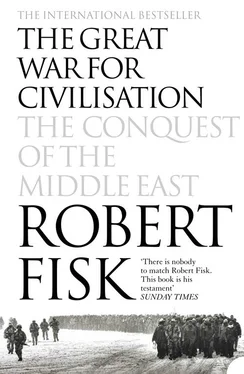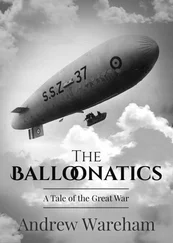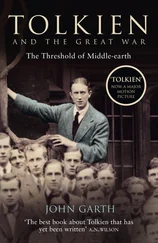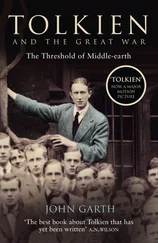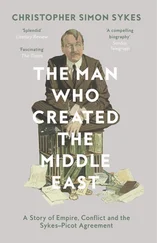But when Kashoggi and I arrived in Almatig, there was Osama bin Laden in his gold-fringed robe, sitting beneath the canopy of a tent before a crowd of admiring villagers and guarded by the loyal Arab mujahedin who fought alongside him in Afghanistan. Bearded, silent figures – unarmed, but never more than a few yards from the man who recruited them, trained them and then dispatched them to destroy the Soviet army – they watched unsmiling as the Sudanese villagers lined up to thank the Saudi businessman who was about to complete the road linking their slums to Khartoum for the first time in history.
My first impression was of a shy man. With his high cheekbones, narrow eyes and long brown robe, he would avert his eyes when the village leaders addressed him. He seemed ill-at-ease with gratitude, incapable of responding with a full smile when children in miniature chadors danced in front of him and preachers admired his wisdom. ‘We have been waiting for this road through all the revolutions in Sudan,’ a bearded sheikh announced. ‘We waited until we had given up on everybody – and then Osama bin Laden came along.’ I noticed how bin Laden, head still bowed, peered up at the old man, acknowledging his age but unhappy that he should be sitting at ease in front of him, a young man relaxing before his elders. He was even more unhappy at the sight of a Westerner standing a few feet away from him, and from time to time he would turn his head to look at me, not with malevolence but with grave suspicion.
Kashoggi put his arms around him. Bin Laden kissed him on both cheeks, one Muslim to another, both acknowledging the common danger they had endured together in Afghanistan. Jamal Kashoggi must have brought the foreigner for a reason. That is what bin Laden was thinking. For as Kashoggi spoke, bin Laden looked over his shoulder at me, occasionally nodding. ‘Robert, I want to introduce you to Sheikh Osama,’ Kashoggi half-shouted through children’s songs. Bin Laden was a tall man and he realised that this was an advantage when he shook hands with the English reporter. Salaam aleikum . His hands were firm, not strong, but, yes, he looked like a mountain man. The eyes searched your face. He was lean and had long fingers and a smile which – while it could never be described as kind – did not suggest villainy. He said we might talk, at the back of the tent where we could avoid the shouting of the children.
Looking back now, knowing what we know, understanding the monstrous beast-figure he would become in the collective imagination of the world, I search for some clue, the tiniest piece of evidence, that this man could inspire an act that would change the world for ever – or, more to the point, allow an American president to persuade his people that the world was changed for ever. Certainly his formal denial of ‘terrorism’ gave no hint. The Egyptian press was claiming that bin Laden had brought hundreds of his Arab fighters with him to Sudan, while the Western embassy circuit in Khartoum was suggesting that some of the Arab ‘Afghans’ whom this Saudi entrepreneur had flown to Sudan were now busy training for further jihad wars in Algeria, Tunisia and Egypt. Bin Laden was well aware of this. ‘The rubbish of the media and embassies,’ he called it. ‘I am a construction engineer and an agriculturalist. If I had training camps here in Sudan, I couldn’t possibly do this job.’
The ‘job’ was certainly ambitious: not just the Almatig connection but a brand-new highway stretching all the way from Khartoum to Port Sudan, a distance of 1,200 kilometres on the old road, now shortened to 800 kilometres by the new bin Laden route that would turn the distance from the capital into a mere day’s journey. In a country that was despised by Saudi Arabia for its support of Saddam Hussein after his 1990 invasion of Kuwait almost as much as it was by the United States, bin Laden had turned the equipment of war to the construction of a pariah state. I did wonder why he could not have done the same to the blighted landscape of Afghanistan, but he refused at first to talk about his war, sitting at the back of the tent and cleaning his teeth with a piece of mishwak wood. But talk he eventually did about a war that he helped to win for the Afghans whom the Americans and the Saudis – and the Pakistanis – all supported against the Russians. He wanted to talk. He thought he was going to be interrogated about ‘terrorism’ and realised that he was being asked about Afghanistan and – despite all the reserve and suspicion he felt towards a foreigner – that he wished to explain how his experience there had shaped his life.
‘What I lived through in two years there,’ he said, ‘I could not have lived in a hundred years elsewhere. When the invasion of Afghanistan started, I was enraged and went there at once – I arrived within days, before the end of 1979, and I went on going back for nine years. I felt outraged that an injustice had been committed against the people of Afghanistan. It made me realise that people who take power in the world use their power under different names to subvert others and to force their opinions on them. Yes, I fought there, but my fellow Muslims did much more than I. Many of them died and I am still alive.’ The Russian invasion is often dated to January 1980, but the first Soviet special forces troops entered Kabul before Christmas of 1979 when they – or their Afghan satellites – killed the incumbent communist President Hafizullah Amin and established Babrak Karmal as their puppet in Kabul. Osama bin Laden had moved fast.
With his Iraqi engineer Mohamed Saad, who was now building the highway to Port Sudan, bin Laden blasted massive tunnels into the Zazai mountains of Pakhtia province for guerrilla hospitals and arms dumps, then cut a mujahedin dirt trail across Afghanistan to within 25 kilometres of Kabul, a remarkable feat of engineering that the Russians could never destroy. But what lessons had bin Laden drawn from the war against the Russians? He was wounded five times and 500 of his Arab fighters were killed in combat with the Soviets – their graves lie just inside the Afghan border at Torkham – and even bin Laden was not immortal, was he?
‘I was never afraid of death,’ he replied. ‘As Muslims, we believe that when we die, we go to heaven.’ He was no longer irritating his teeth with the piece of mishwak wood but talking slowly and continuously, leaning forward, his elbows on his knees. ‘Before a battle, God sends us seqina – tranquillity. Once I was only thirty metres from the Russians and they were trying to capture me. I was under bombardment but I was so peaceful in my heart that I fell asleep. This experience of seqina has been written about in our earliest books. I saw a 120-millimetre mortar shell land in front of me, but it did not blow up. Four more bombs were dropped from a Russian plane on our headquarters but they did not explode. We beat the Soviet Union. The Russians fled … My time in Afghanistan was the most important experience of my life.’
But what of the Arab mujahedin whom he took to Afghanistan – members of a guerrilla army who were also encouraged and armed by the United States to fight the Russians, and who were forgotten by their mentors when the war was over? Bin Laden seemed ready for the question. ‘Personally neither I nor my brothers saw evidence of American help,’ he said. ‘When my mujahedin were victorious and the Russians were driven out, differences started so I returned to road construction in Taif and Abha. I brought back the equipment I had used to build tunnels and roads for the mujahedin in Afghanistan. Yes, I helped some of my comrades come here after the war.’ How many? Osama bin Laden shook his head. ‘I don’t want to say. But they are here with me now, they are working right here, building this road to Port Sudan.’
Читать дальше
